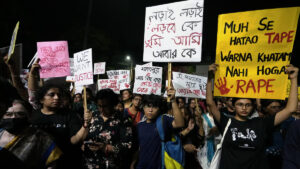West Bengal has a rich history of social justice movements that have evolved over decades, addressing various issues ranging from refugee rights to labor rights, and civil liberties. These movements have often been characterized by grassroots mobilization and significant participation from diverse sections of society, including peasants, students, and marginalized communities. Below is a detailed exploration of key social justice movements in West Bengal, structured point-wise for clarity.
1. Historical Context
– Colonial Legacy: The roots of social justice movements in West Bengal can be traced back to the anti-colonial struggle, where radical peasant and student mobilizations laid the groundwork for future activism.
– Post-Independence Dynamics: After independence in 1947, West Bengal witnessed various movements that focused on social justice, particularly addressing issues of land rights, labor rights, and refugee rehabilitation.
2. Key Movements of Social Justice in west bengal
Refugee Rights Movement
– Background: Following the partition of India in 1947, a significant influx of refugees from East Pakistan (now Bangladesh) settled in West Bengal, leading to socio-economic challenges.
– Mobilization: Refugees organized to demand their rights, viewing relief and rehabilitation as entitlements rather than charity. Leftist parties played a crucial role in mobilizing these communities, emphasizing their rights as citizens.
Land Rights Movements of social justice in west bengal
– Peasant Agitations: The 1950s and 1960s saw intense peasant movements, particularly against land acquisition for industrial projects. The Durgapur peasant agitation is a notable example where farmers protested against displacement due to the establishment of a steel plant.
– Naxalite Movement: Emerging in the late 1960s, this movement was a radical leftist uprising that sought to address the grievances of the rural poor and landless laborers. It highlighted issues of land distribution and social inequality, influencing subsequent social justice discourses.
Labor Movements of social justice
– Industrial Strikes: West Bengal’s industrial landscape, particularly in jute and steel, has been marked by significant labor movements. Strikes and protests in the jute belts of Hooghly and Howrah during the 1950s and 1960s were pivotal in advocating for workers’ rights and better working conditions.
– Burnpur Steel Factory Protests: Labor unrest in the Burnpur steel factory exemplified the struggles of industrial workers, focusing on wage demands and job security, which were critical issues for the working class in West Bengal.
3. Recent Developments
The Nabanna March
– Context: In August 2024, protests erupted following the rape and murder of a doctor at R.G. Kar Medical College. The incident sparked widespread outrage and mobilization across West Bengal, leading to the ‘March to Nabanna’—a demonstration aimed at demanding justice.

– Political Dynamics: The protests quickly became politicized, with clashes between demonstrators and police, and involvement from political parties like the BJP and Trinamool Congress. This highlighted the challenges of maintaining a unified social justice movement in a politically charged environment.
Women’s Rights and Safety Movements
– Reclaiming Public Spaces: The protests also included significant participation from women, who demanded safer public spaces and justice for victims of violence. This movement reflects a broader trend of women’s activism in West Bengal, emphasizing their role in social justice issues.
4. Challenges Faced
– Political Interference: Many movements have faced challenges due to political interference, with parties attempting to co-opt grassroots movements for electoral gains. This often leads to fragmentation and dilution of the original demands.
– State Repression: Activists have reported instances of state repression, including police violence against peaceful protesters, which poses a significant hurdle for sustained mobilization efforts.

5. Conclusion
Social justice movements have been instrumental in shaping the socio-political landscape of the state. They have addressed critical issues affecting marginalized communities and have often served as a platform for broader societal change. While challenges such as political interference and state repression persist, the resilience of these movements continues to inspire new generations of activists. The ongoing struggles for justice, particularly in light of recent events, underscore the importance of sustained advocacy and solidarity among diverse groups within society.
As West Bengal navigates its complex socio-political terrain, the legacy of its social justice movements remains a vital part of its identity, reflecting the ongoing quest for equity and rights among its people.
For more information, please visit https://bengali.abplive.com
Leave a Reply